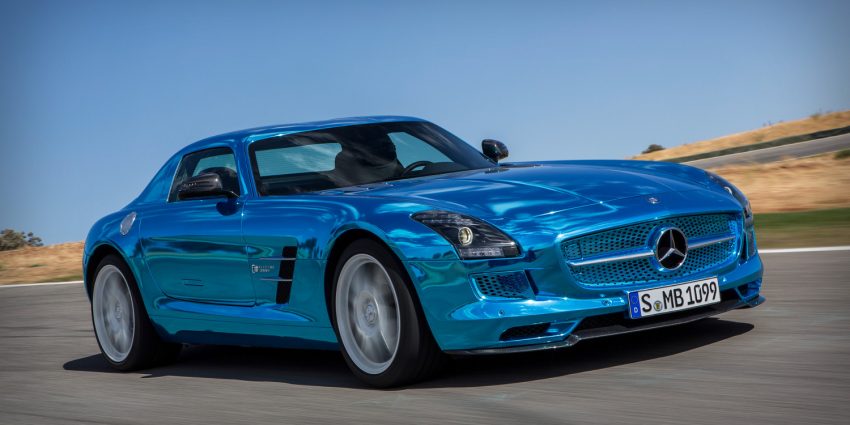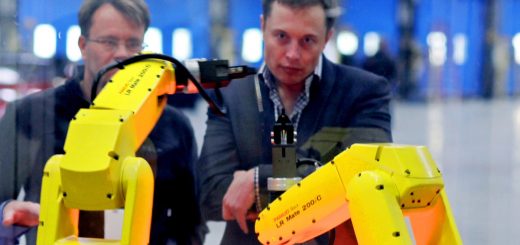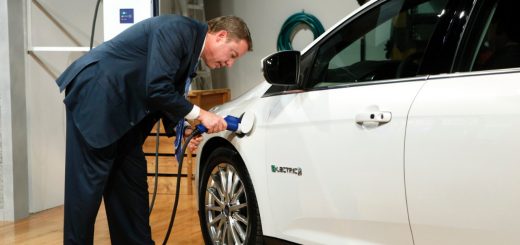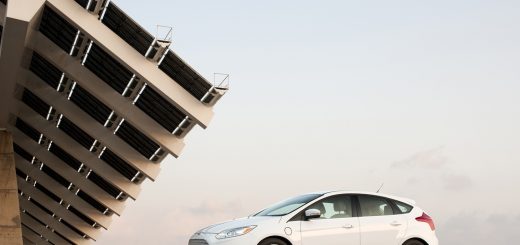Chances are, you’ve never seen a Mercedes-Benz SLS AMG Electric Drive in-the-flesh. We certainly haven’t, and we probably never will; it’s an exceedingly rare bird, with only 200 examples made, each costing somewhere north of $500,000, and each sold exclusively to the inhabitants of a land called “Europe.”
So why talk about it? Because it holds a very important clue regarding what the future of the performance electric-vehicle could look like underneath. Namely, the Mercedes SLS AMG ED drives each of its four wheels with a separate electric motor, each capable of turning at its own, independent speed.
That may seem like a simple enough idea, but the effects such a powertrain has on agility are tremendous. Because each wheel is controlled independently of the others, different rotational speeds and torque assignments can be doled out by a central controller, negating the need for any brake-based torque-vectoring, or electronic or mechanical differentials.
It’s clean. Simple. Organic. Those are three of our absolute favorite things.
In fact, the geniuses at Mercedes-Benz and its AMG performance arm have made use of what they have dubbed “negative torque.” That is to say, whenever warranted, the SLS ED’s electric motor controllers can send a force opposite the inside wheels’ direction of rotation to increase turn-in agility. True, that’s not unlike how brakes might function in a contemporary brake-based torque-vectoring system, but it’s much more elegant – and from what we can tell, effective. In 2013, Car and Driver compared the handling of the Mercedes SLS AMG ED to the agility of a ballerina.
Do you know any ballerinas who weigh in at around 4,700 pounds? We sure don’t.
What’s more is that the folks at Mercedes-Benz implemented this drivetrain right, which is to say, without fitting the 100-pound electric motors to the wheel hubs. (Can you imagine?) The drive motors are instead mounted somewhere more central underneath the car, each driving its respective wheel via driveshaft. This, of course, keeps unsprung mass down, which is essential to ensuring a decent suspension reaction-time.
So why, after all, haven’t there been more manufacturers adopting similar, quadruple-electric-motor powertrain setups? Well, there are a number of setbacks. First and foremost, electric batteries are already hugely penalizing in the weight department for any contemporary EV. The battery pack in the Mercedes SLS AMG ED, for instance, weighs some 1,200 pounds. Adding one or two electric motors to this is penalty enough. In the case of the Mercedes, though, each of the four motors weighs around 100 pounds, contributing to the aforementioned 4,700-pound heft – even after an extensive use of carbon fiber.
And second, such a setup necessarily demands four separate transmissions. In the case of the SLS AMG Electric Drive, each of those is a fixed-ratio unit; it’s unclear whether synchronizing four multiple-speed transmissions would be possible at the required level of accuracy. As a result, both acceleration and top speed are compromises born out of the need to find a single drive ratio which allows the electric drive motors to perform satisfactorily at any RPM.
Nonetheless, the benefit to agility of such a quadruple-electric-motor powertrain can hardly be overstated. While we’re still waiting for its implementation on another – perhaps more attainable – EV, it’s likely only a matter of time before it surfaces again.
We’re holding our breath.














No Comments yet